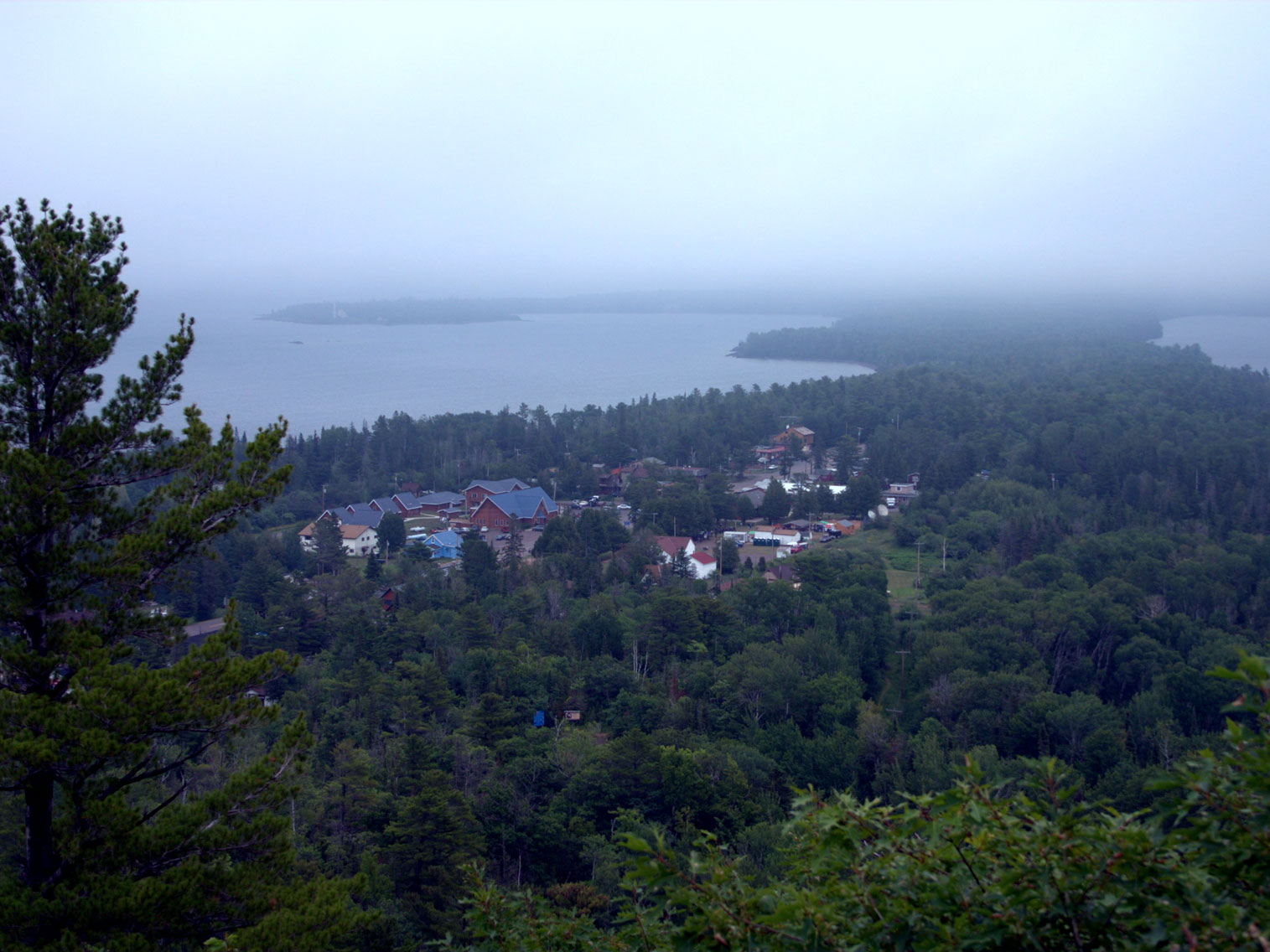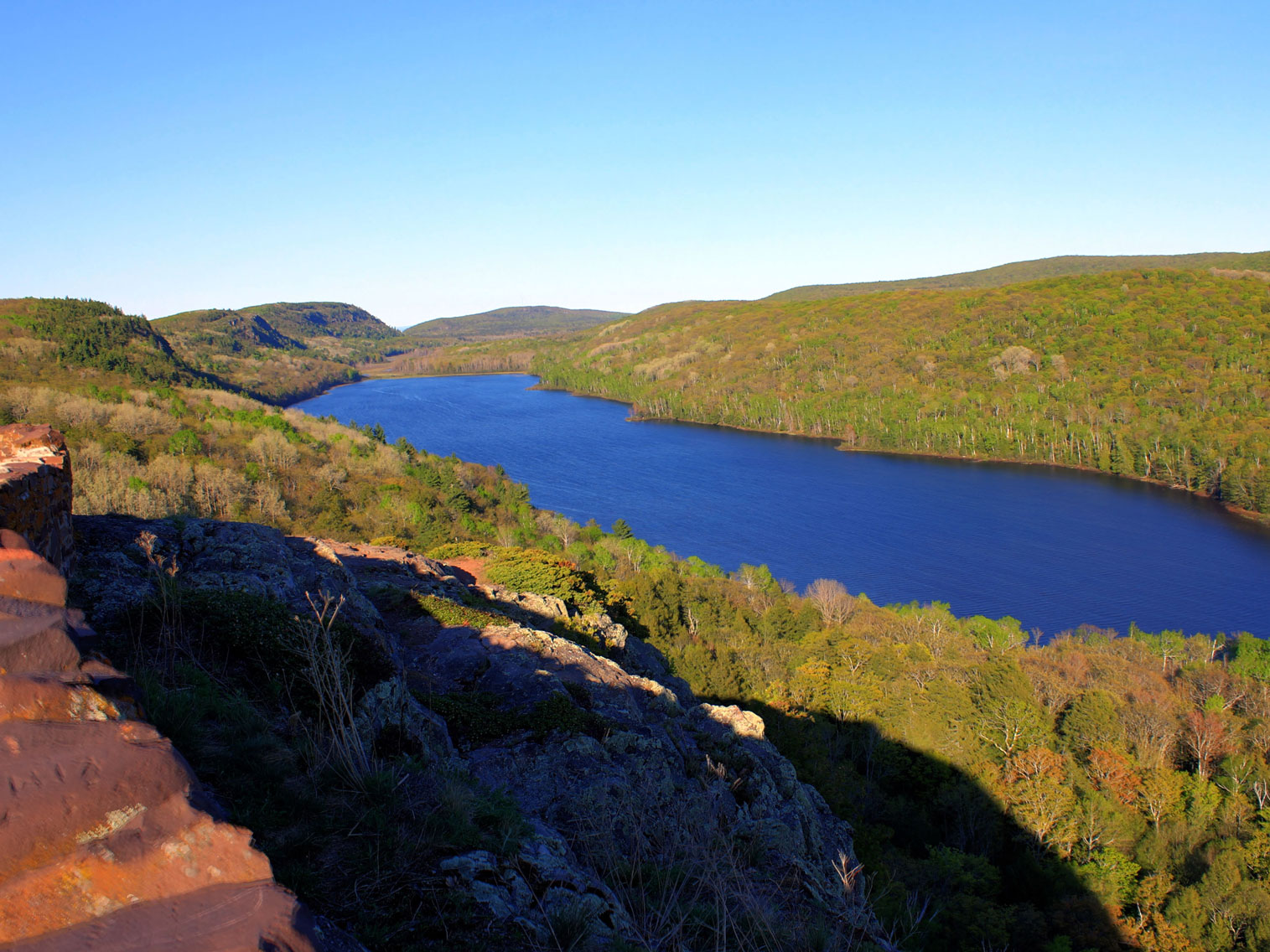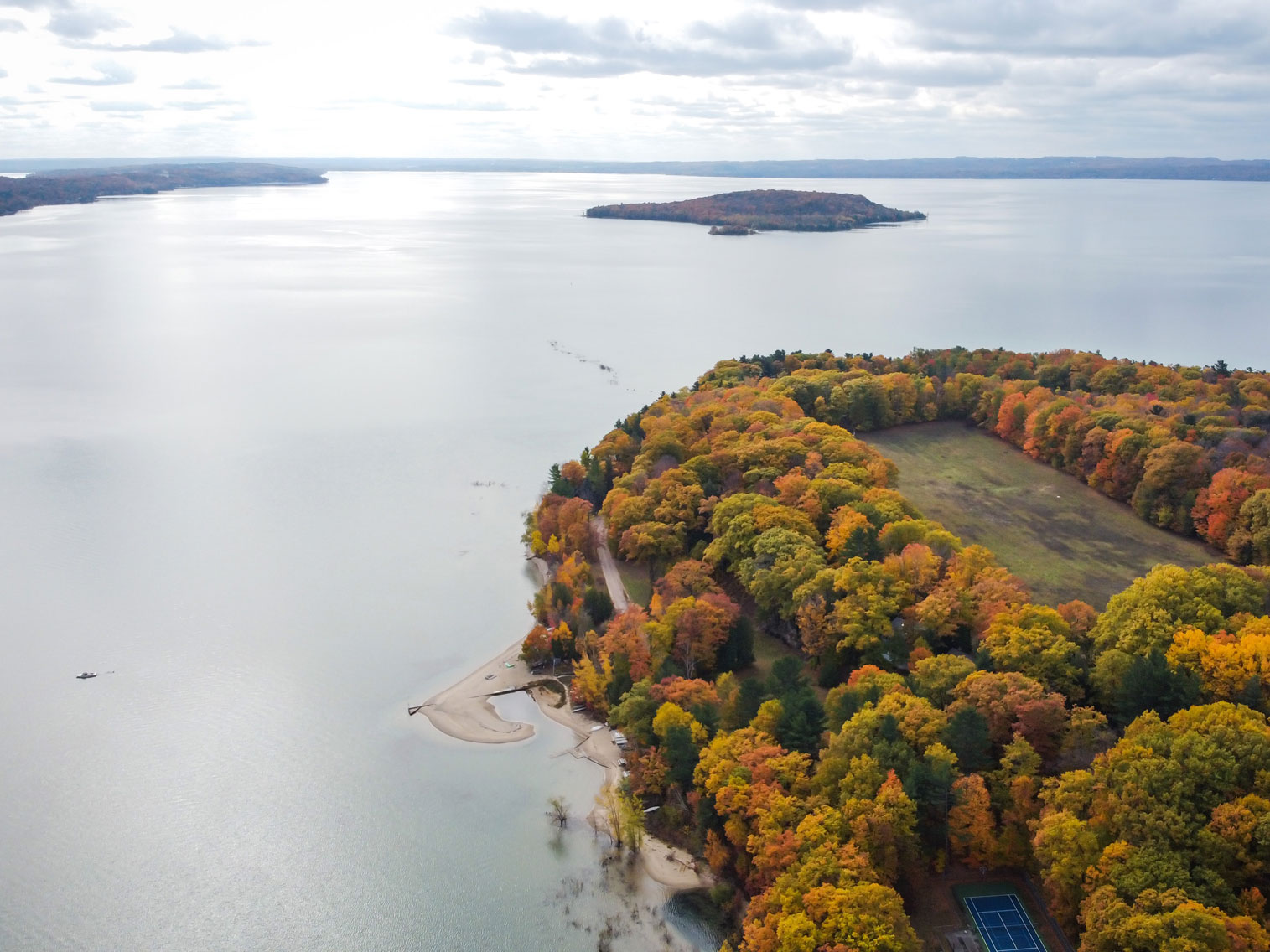Michigan Travel Guide
State in the Great Lakes region of the upper Midwestern United States with its capital Lansing, and its largest city is Detroi, which is among the nation's most populous and largest metropolitan economies, and is the only state to consist of two peninsulas and has the longest freshwater coastline of any political subdivision in the world, being bordered by four of the five Great Lakes, plus Lake St. Clair
Places to See in Michigan

Rock Harbor Lighthouse
Ray Dumas, CC BY-SA 2.0, via Wikimedia Commons; Image Size Adjusted
Isle Royale National Park
National park consisting of Isle Royale, the fourth-largest lake island in the world, and more than 400 small adjacent islands, as well as the surrounding waters of Lake Superior

Brockway Mountain Drive east overlook
Russell Harrison Photography from Raleigh, NC, US, CC BY-SA 2.0, via Wikimedia Commons; Image Size Adjusted
Keweenaw Peninsula
Northernmost part of Michigan's Upper Peninsula, projecting into Lake Superior and was the site of the first copper boom in the United States, leading to its moniker of "Copper Country"

Michael Sprague from Asheville, North Carolina, CC BY-SA 2.0, via Wikimedia Commons; Image Size Adjusted
Mackinac Island
Island and resort area, covering 4.35 square miles in land area located in Lake Huron between Michigan's Upper and Lower Peninsulas

Pictured Rocks National Lakeshore arch
Chris857, CC BY-SA 3.0, via Wikimedia Commons; Image Size Adjusted
National Landmarks and Landscapes
Grand Island National Recreation Area · Pictured Rocks National Lakeshore · Sleeping Bear Dunes National Lakeshore

Yinan Chen, Public Domain, via Wikimedia Commons; Image Size Adjusted
Landmarks and Landscapes
Bond Falls · Mackinac Bridge · Palms Book State Park · Porcupine Mountains · Tahquamenon Falls State Park

Photo by Nick Perez on Unsplash; Image Size Adjusted
Cities
Traverse City, MI
Michigan is a state in the Great Lakes region of the upper Midwestern United States. Its name derives from a gallicized variant of the original Ojibwe word meaning 'large water' or 'large lake'. Its capital is Lansing, and its largest city is Detroit. Metro Detroit is among the nation's most populous and largest metropolitan economies.
Michigan is the only state to consist of two peninsulas. The Lower Peninsula is shaped like a mitten. The Upper Peninsula (often called "the U.P.") is separated from the Lower Peninsula by the Straits of Mackinac, a five-mile (8 km) channel that joins Lake Huron to Lake Michigan. The Mackinac Bridge connects the peninsulas. Michigan has the longest freshwater coastline of any political subdivision in the world, being bordered by four of the five Great Lakes, plus Lake St. Clair. It also has 64,980 inland lakes and ponds. Michigan has the second-most water of any state, behind only Alaska.
The area was first occupied by a succession of Native American tribes over thousands of years. Inhabited by natives, Métis, and French explorers in the 17th century, it was claimed as part of the New France colony. After France's defeat in the French and Indian War in 1762, the region came under British rule. Britain ceded the territory to the newly independent United States after Britain's defeat in the American Revolutionary War. The area was part of the larger Northwest Territory until 1800, when western Michigan became part of the Indiana Territory. Michigan Territory was formed in 1805, but some of the northern border with Canada was not agreed upon until after the War of 1812. Michigan was admitted into the Union in 1837 as the 26th state. It soon became an important center of industry and trade in the Great Lakes region.
Although Michigan developed a diverse economy, it is widely known as the center of the U.S. automotive industry, which developed as a major economic force in the early 20th century. It is home to the country's three major automobile companies (whose headquarters are all in Metro Detroit). While sparsely populated, the Upper Peninsula is important for tourism due to its abundance of natural resources, while the Lower Peninsula is a center of manufacturing, forestry, agriculture, services, and high-tech industry.
Michigan has many popular tourist destinations, including areas such as Frankenmuth in The Thumb, and Traverse City on the Grand Traverse Bay in Northern Michigan.
The heavily forested Upper Peninsula is relatively mountainous in the west. The Porcupine Mountains, which are part of one of the oldest mountain chains in the world, rise to an altitude of almost 2,000 feet (610 m) above sea level and form the watershed between the streams flowing into Lake Superior and Lake Michigan. The surface on either side of this range is rugged. The state's highest point, in the Huron Mountains northwest of Marquette, is Mount Arvon at 1,979 feet (603 m). The peninsula is as large as Connecticut, Delaware, Massachusetts, and Rhode Island combined but has fewer than 330,000 inhabitants.
The Lower Peninsula is shaped like a mitten. The surface of the peninsula is generally level, broken by conical hills and glacial moraines usually not more than a few hundred feet tall. It is divided by a low water divide running north and south. The larger portion of the state is on the west of this and gradually slopes toward Lake Michigan. The highest point in the Lower Peninsula is either Briar Hill at 1,705 feet (520 m), or one of several points nearby in the vicinity of Cadillac. The lowest point is the surface of Lake Erie at 571 feet (174 m).
A feature of Michigan that gives it the distinct shape of a mitten is the Thumb. This peninsula projects out into Lake Huron and the Saginaw Bay. The geography of the Thumb is mainly flat with a few rolling hills. Other peninsulas of Michigan include the Keweenaw Peninsula, making up the Copper Country region of the state. The Leelanau Peninsula lies in the Northern Lower Michigan region.
The state is home to several areas maintained by the National Park Service including: Isle Royale National Park, in Lake Superior, about 30 miles (48 km) southeast of Thunder Bay, Ontario. Other national protected areas in the state include: Keweenaw National Historical Park, Pictured Rocks National Lakeshore, Sleeping Bear Dunes National Lakeshore, Huron National Forest, Manistee National Forest, Hiawatha National Forest, Ottawa National Forest and Father Marquette National Memorial. The largest section of the North Country National Scenic Trail passes through Michigan.
With 78 state parks, 19 state recreation areas, and six state forests, Michigan has the largest state park and state forest system of any state.
Holland, Michigan, is the home of the Tulip Time Festival, the largest tulip festival in the U.S.
Tourism in metropolitan Detroit draws visitors to leading attractions, especially The Henry Ford, the Detroit Institute of Arts, the Detroit Zoo, and to sports in Detroit. Other museums include the Detroit Historical Museum, the Charles H. Wright Museum of African American History, museums in the Cranbrook Educational Community, and the Arab American National Museum. The
Michigan music is known for three music trends: early punk rock, Motown/soul music and techno music. Michigan musicians include Bill Haley & His Comets, The Supremes, The Marvelettes, The Temptations, The Four Tops, Stevie Wonder, Marvin Gaye "The Prince of Soul", Smokey Robinson and the Miracles, Aretha Franklin, Mary Wells, Tommy James and the Shondells, ? and the Mysterians, Al Green, The Spinners, Grand Funk Railroad, The Stooges, the MC5, The Knack, Madonna "The Queen of Pop", Bob Seger, Ray Parker Jr., Aaliyah, Eminem, Kid Rock, Jack White and Meg White (The White Stripes), Big Sean, Alice Cooper, and Del Shannon.
This article uses material from the Wikipedia article "Michigan" which is released under the Creative Commons Attribution-Share-Alike License 3.0